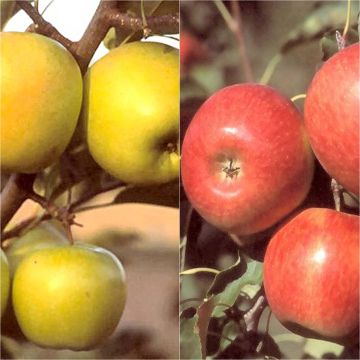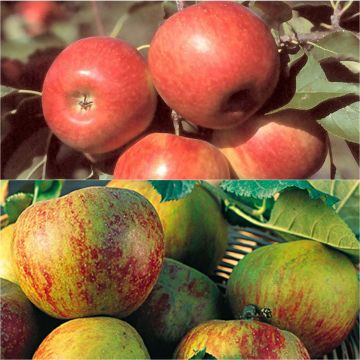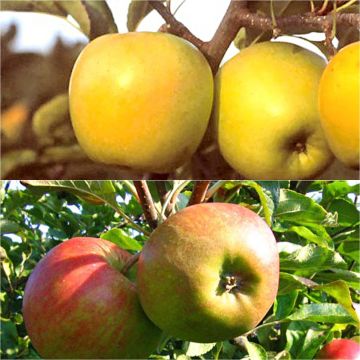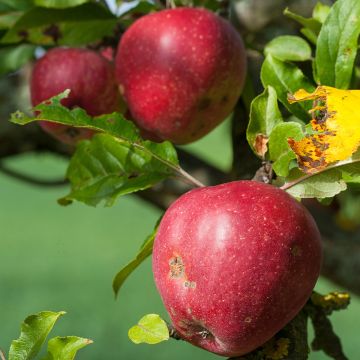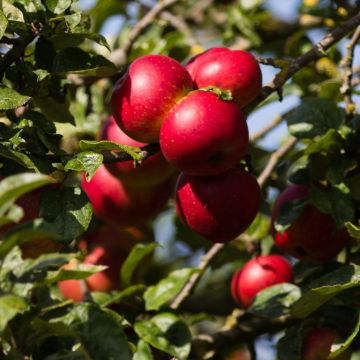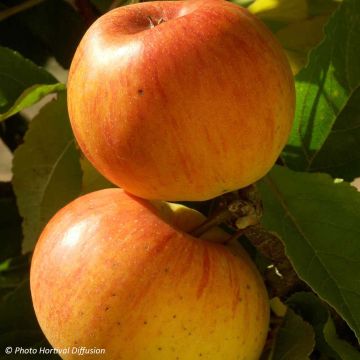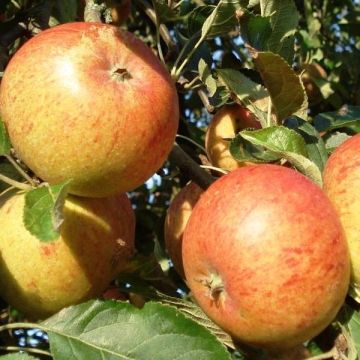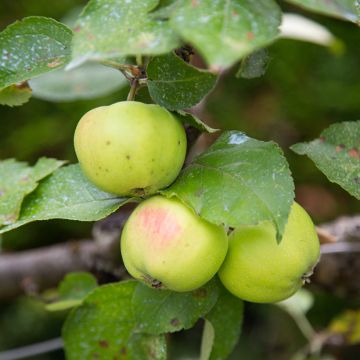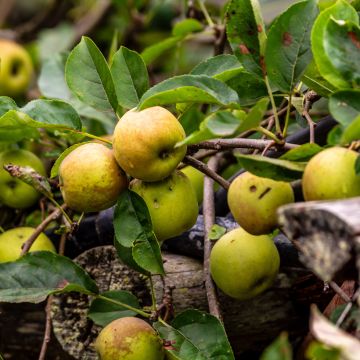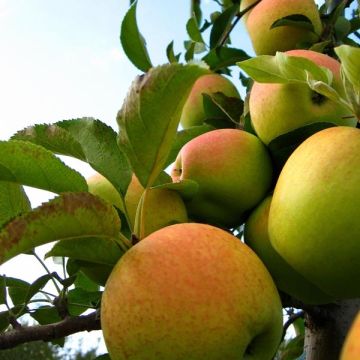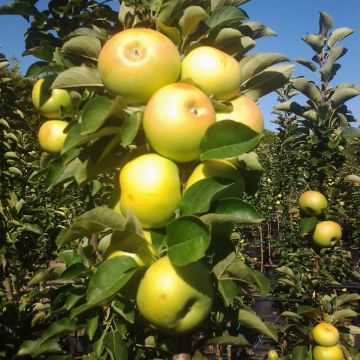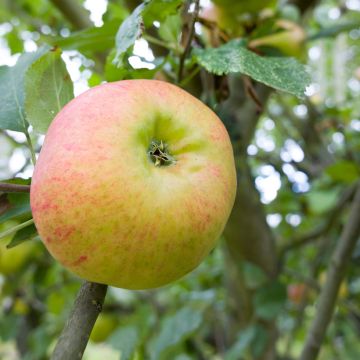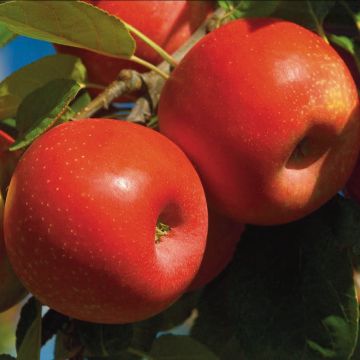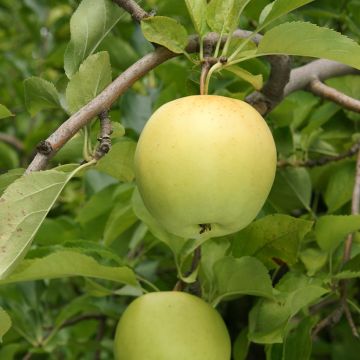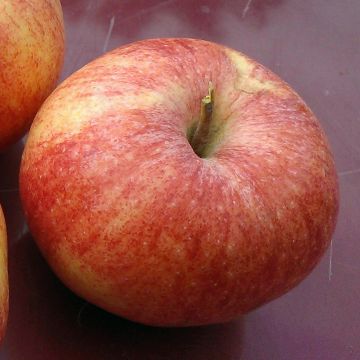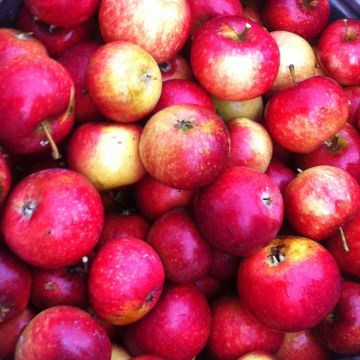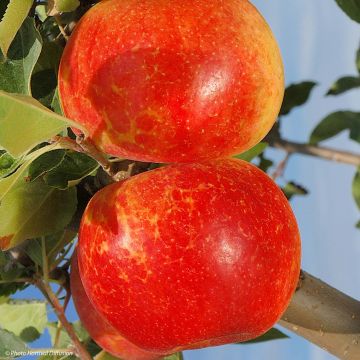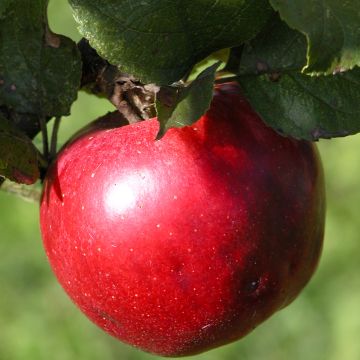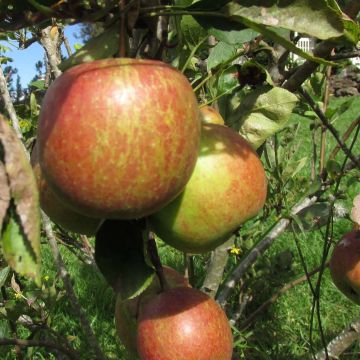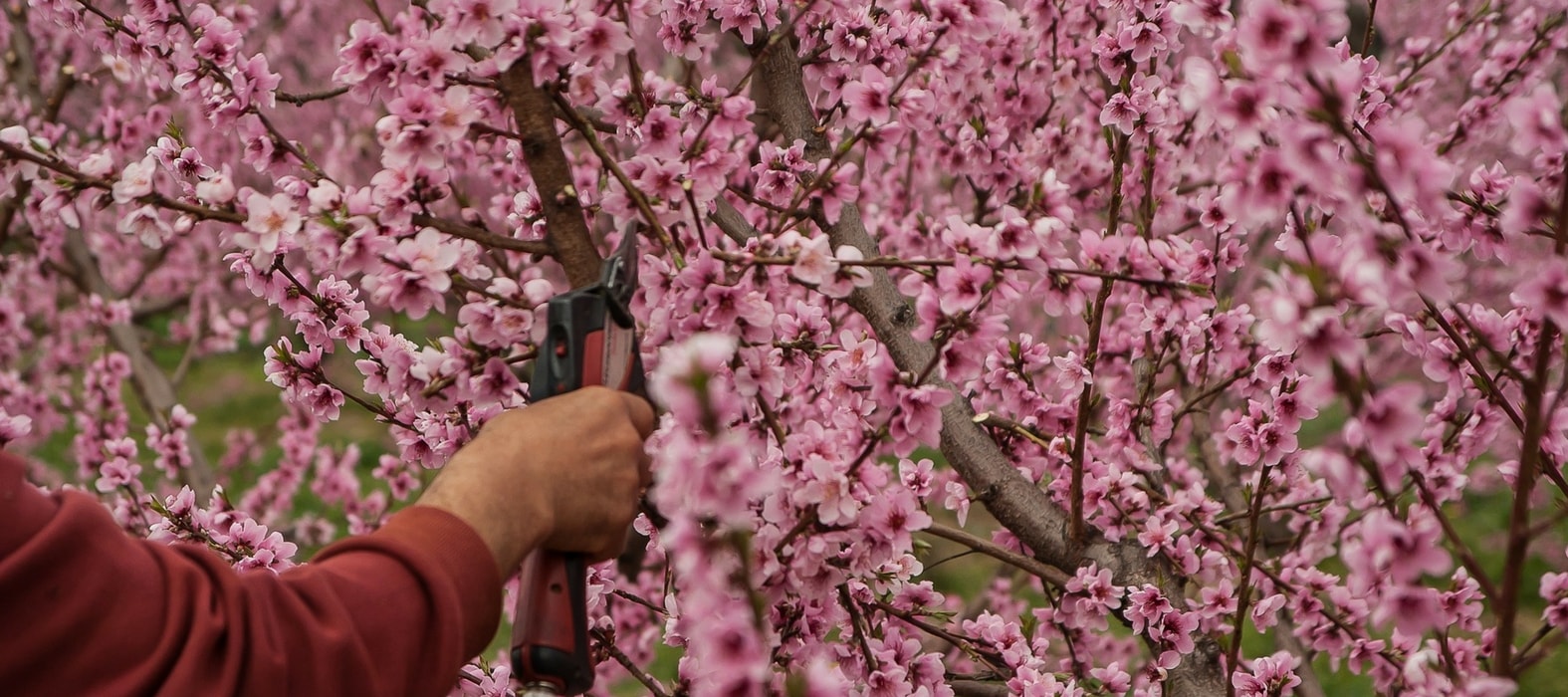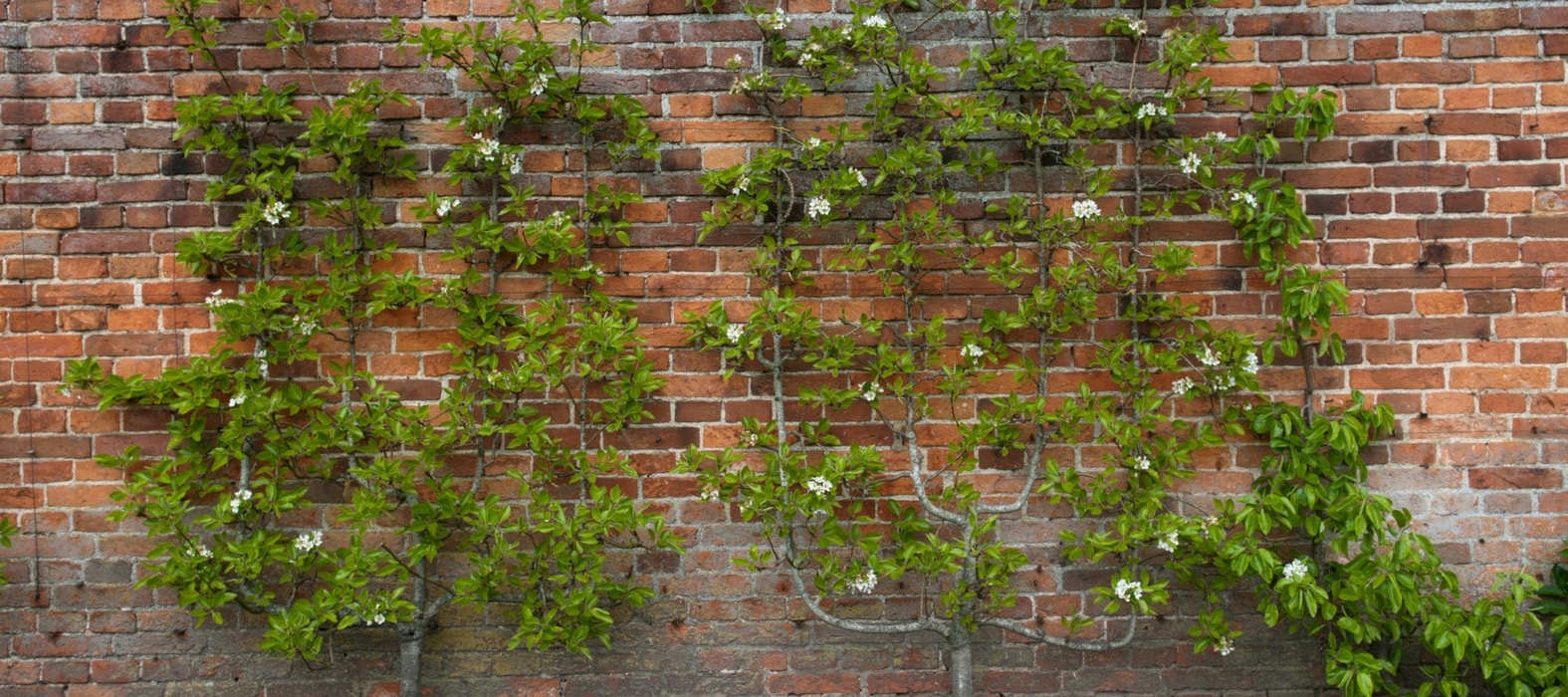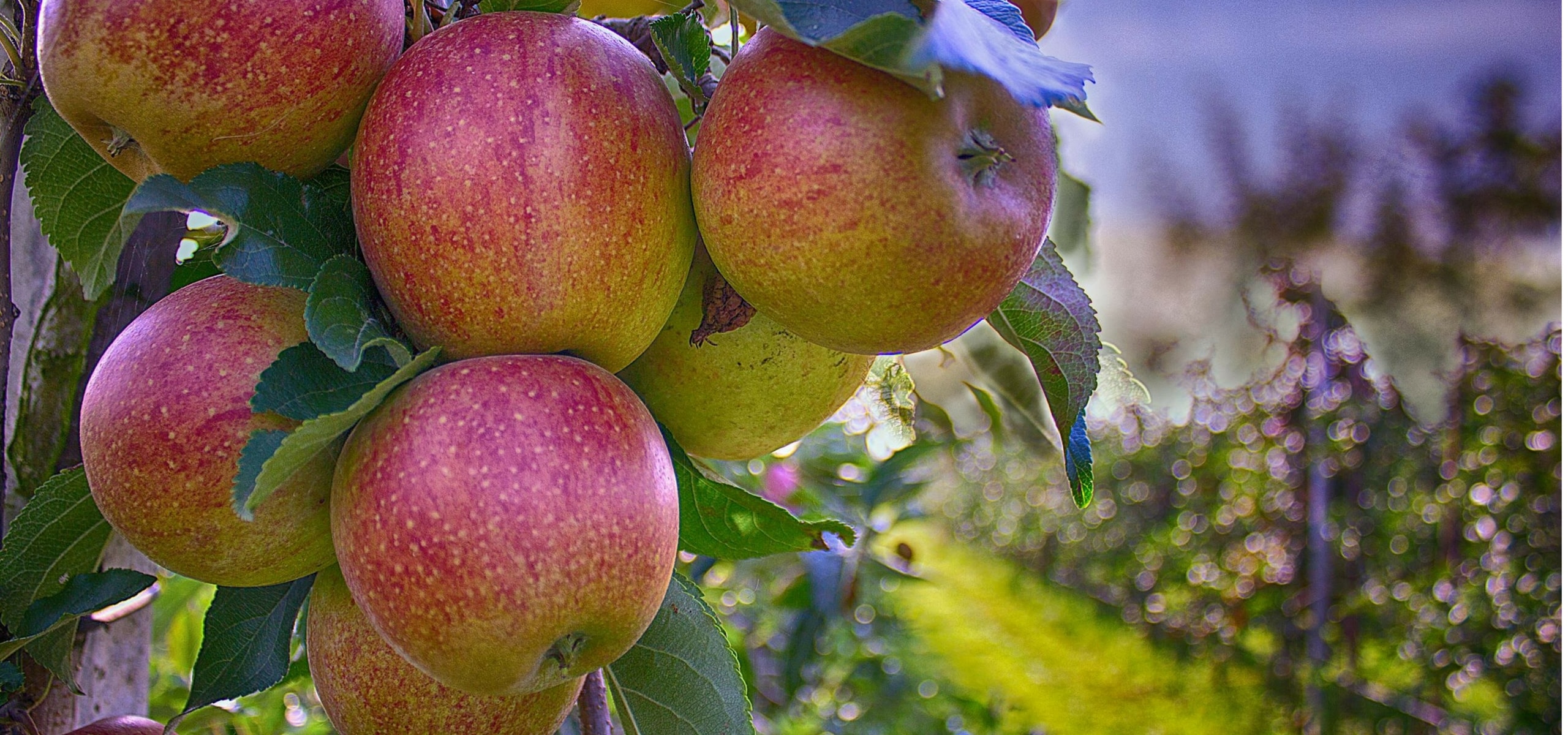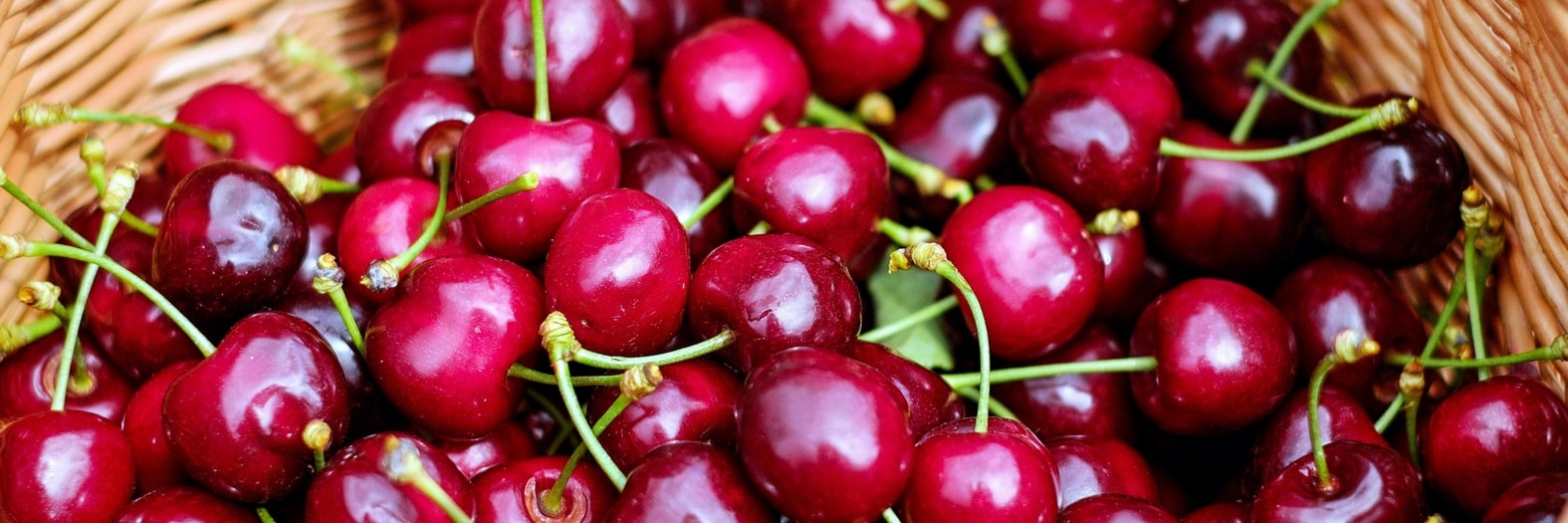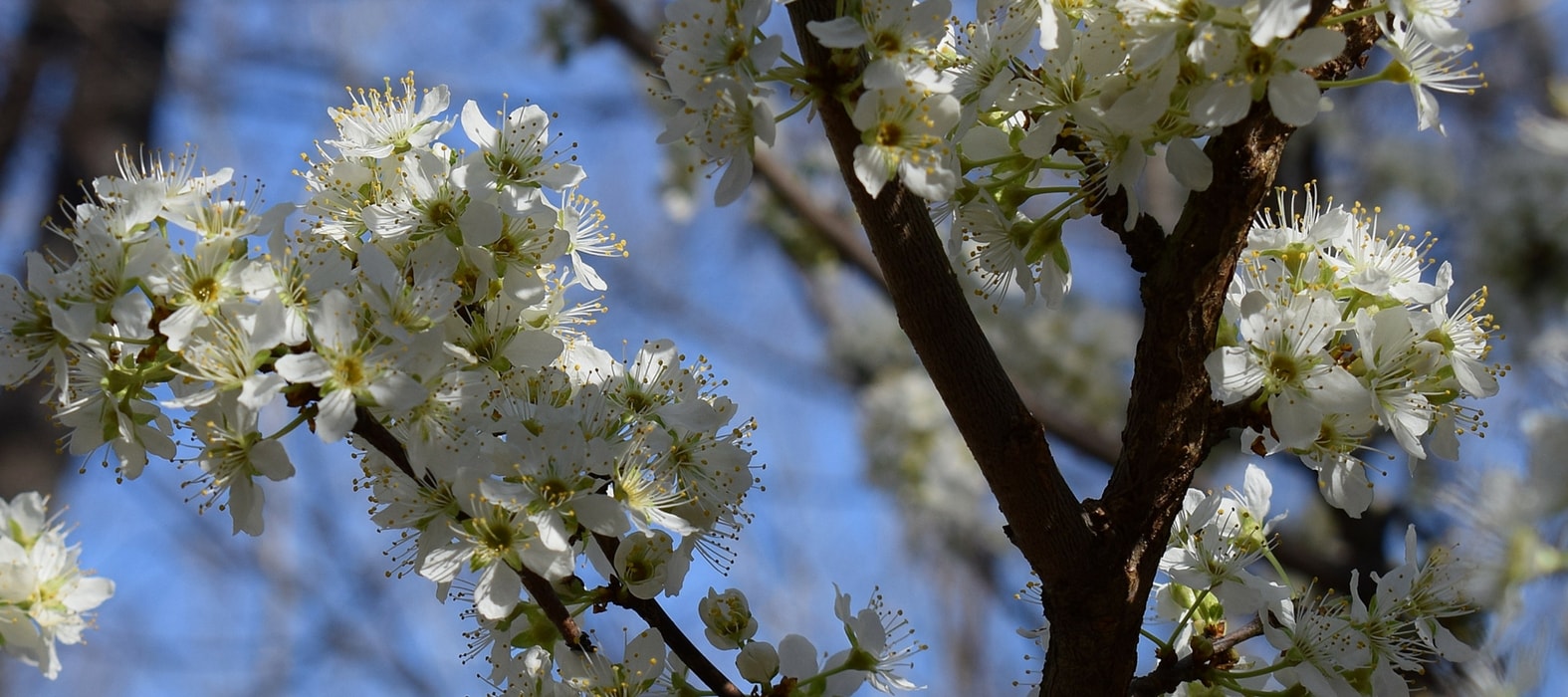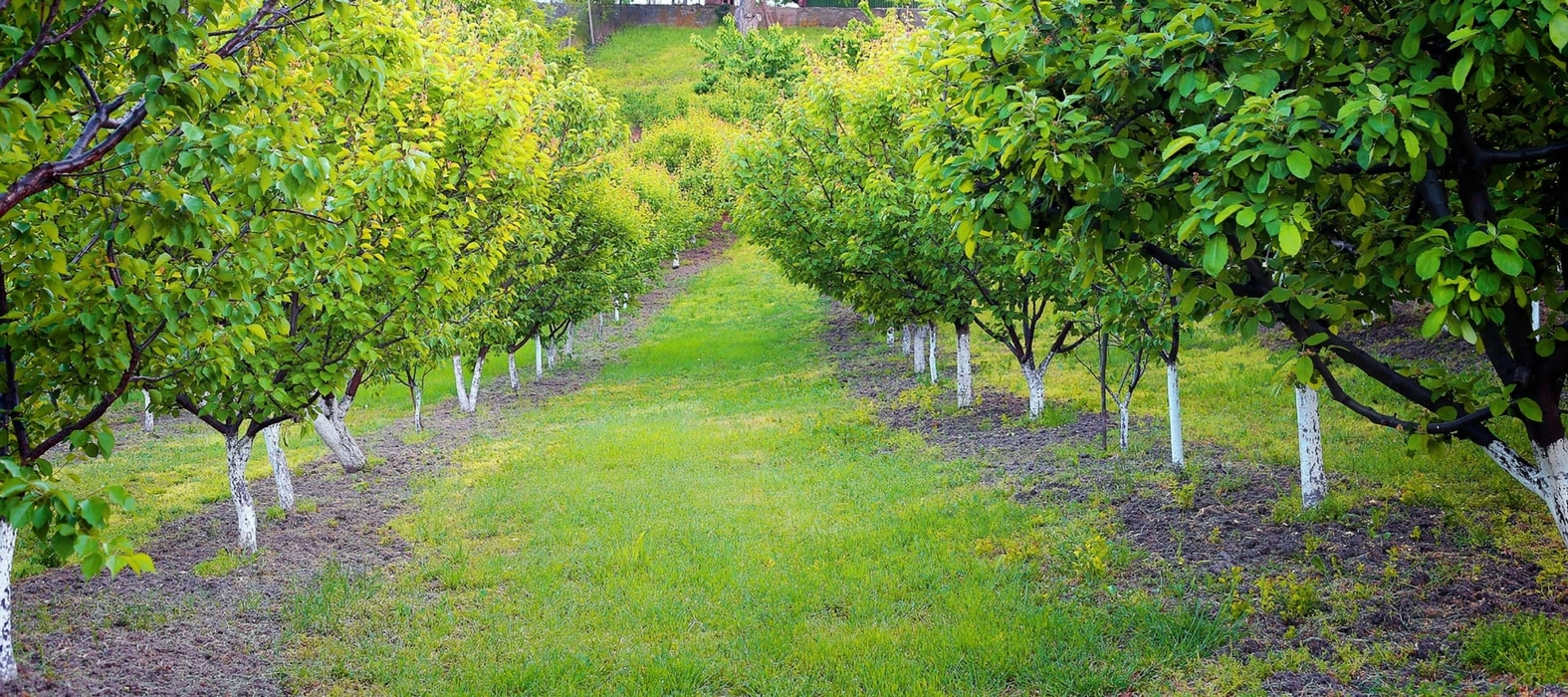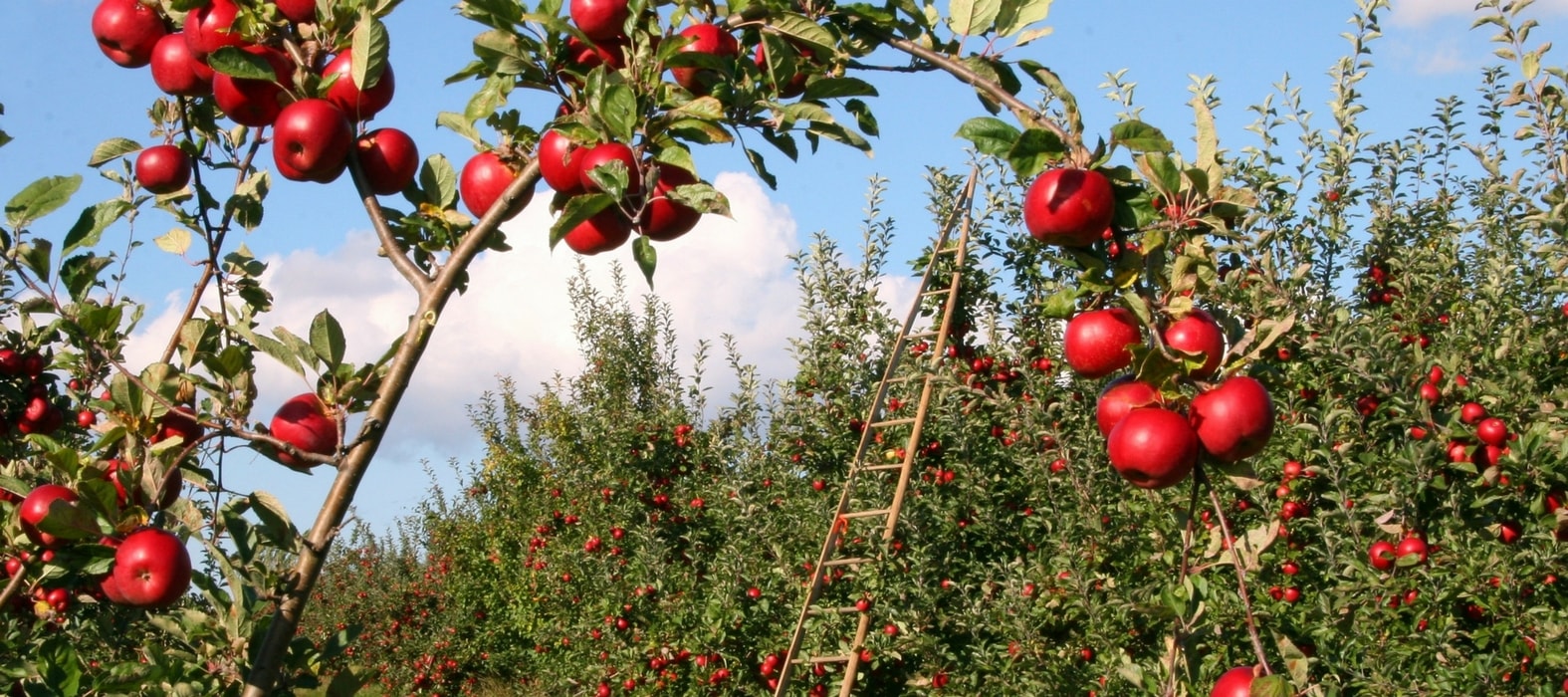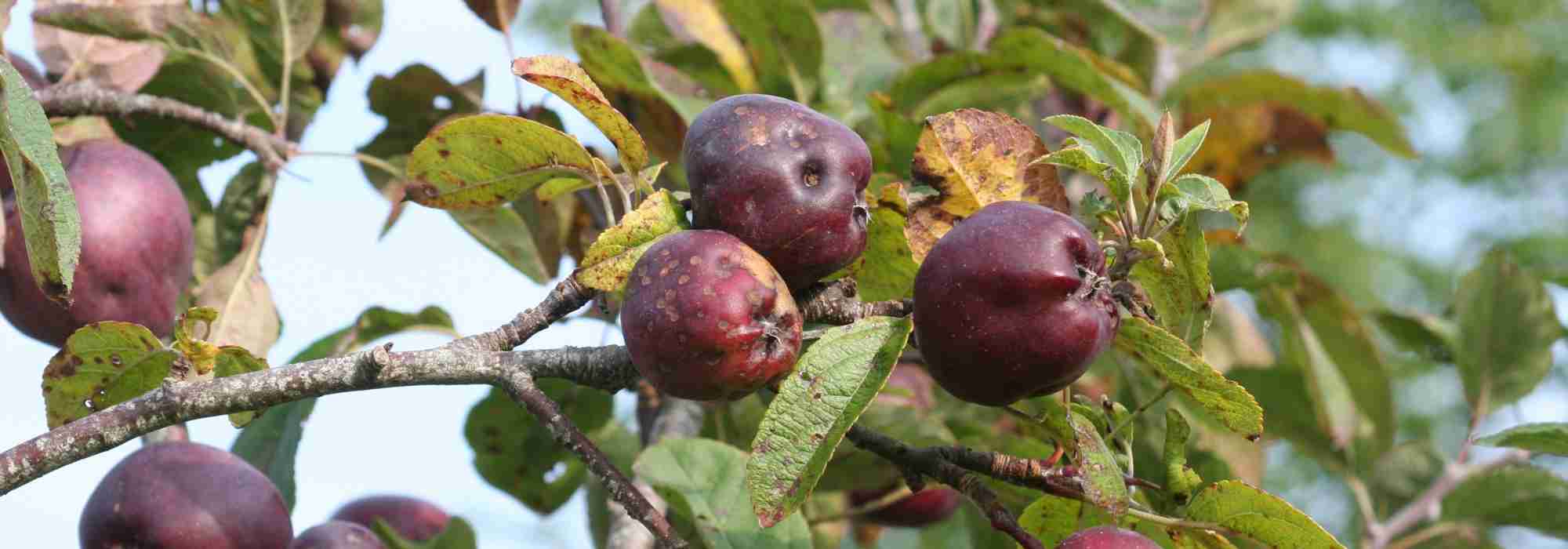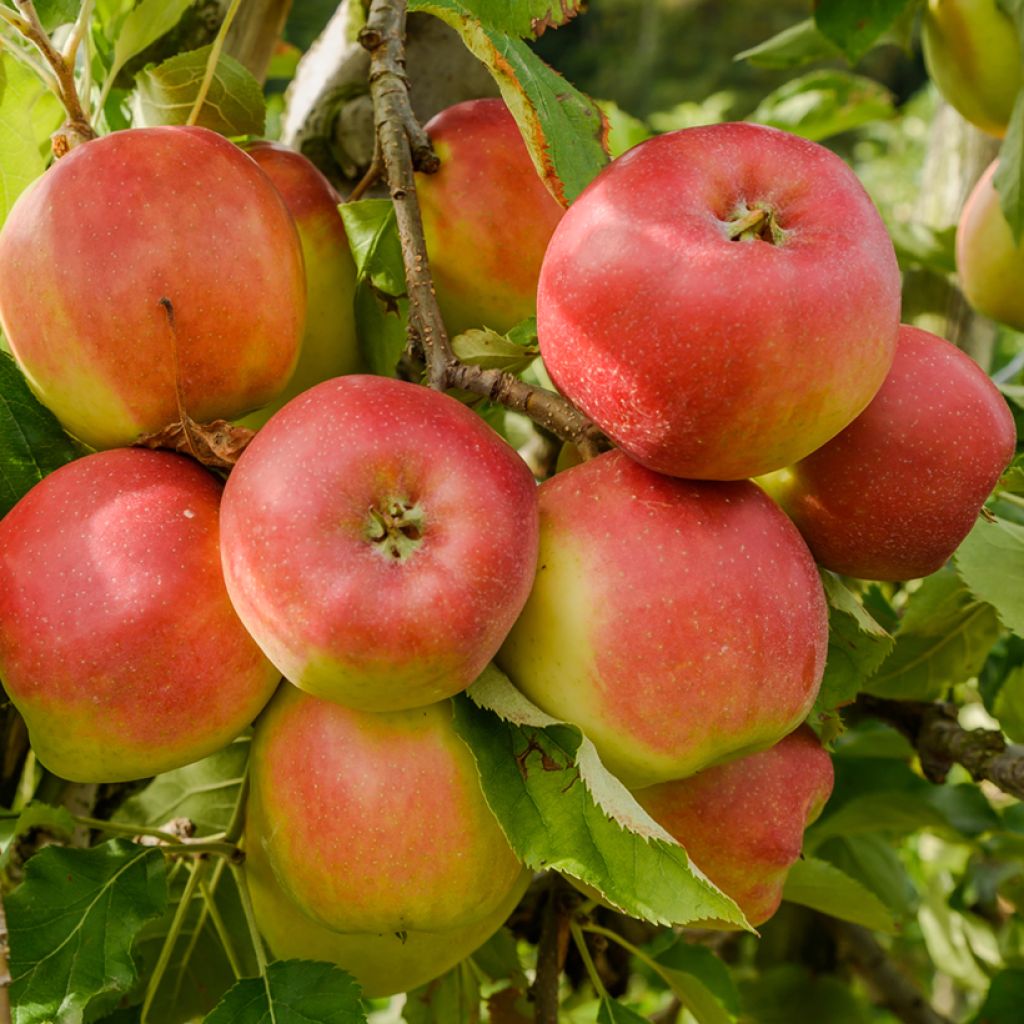

Malus domestica Grafsztynek Inflancki - Native Apple Tree, Common Apple Tree
Malus domestica Grafsztynek Inflancki - Native Apple Tree, Common Apple Tree
Malus domestica Grafsztynek Inflancki
Pommier domestique, Pommier commun
Special offer!
Receive a €20 voucher for any order over €90 (excluding delivery costs, credit notes, and plastic-free options)!
1- Add your favorite plants to your cart.
2- Once you have reached €90, confirm your order (you can even choose the delivery date!).
3- As soon as your order is shipped, you will receive an email containing your voucher code, valid for 3 months (90 days).
Your voucher is unique and can only be used once, for any order with a minimum value of €20, excluding delivery costs.
Can be combined with other current offers, non-divisible and non-refundable.
Why not try an alternative variety in stock?
View all →This plant carries a 6 months recovery warranty
More information
We guarantee the quality of our plants for a full growing cycle, and will replace at our expense any plant that fails to recover under normal climatic and planting conditions.
Description
The 'Grafsztynek Inflancki' Apple Tree is a variety originating from the Baltic countries, highly resistant to cold and less susceptible to diseases, particularly scab and powdery mildew. It produces medium to large-sized fruit, spherical in shape, with a fine, green-yellow epidermis that turns red on the sun-exposed side. Their creamy-white flesh is moderately firm and aromatic, very juicy, and their tangy flavour reveals a hint of raspberry. This apple can be enjoyed raw and is equally suitable for cooking for desserts and preserves. The presence of another pollinating variety nearby is necessary to optimise flower fertilisation and ensure a good harvest.
The Apple Tree belongs to the extensive Rosaceae family, just like most of our other temperate-climate fruit trees (Peach, Pear Tree, Raspberry...). The genus Malus includes around forty species, including the common Apple Tree, Malus domestica (synonyms, Malus communis or Malus pumila), as well as flowering species, such as the stunning Coccinella Courtarou Ornamental Crab Apple. Cultivated for a very long time (the Romans already knew 29 varieties), there are now around 20,000 cultivars. The Malus domestica 'Grafsztynek Inflancki' is a fairly old Baltic variety, highly prized in Poland for its exceptional resistance to cold weather, down to -30°C. It enjoyed its heyday from the 1930s to the 1960s, mainly in amateur gardens. The tree exhibits moderate growth, neither too vigorous nor too fast, making it an excellent choice for gardens with limited space. It will typically reach 4m in height with a spread of 3.5m, featuring a fairly dense, spreading crown with slightly trailing shoots. It begins to bear fruit after just a few years, requiring a little patience. The yield will gradually increase over the years to a rather high abundance. However, this variety can sometimes exhibit a biennial fruit bearing tendency, meaning the harvest yield fluctuates from one year to the next. Like most varieties, its single, pinkish-white blossom is quite ornamental and blooms in April or even May depending on the region. The nearby presence of a pollinating variety such as 'Antonówka Zwykła', 'Ananas Berżenicki', or 'James Grieve' is necessary to enable flower fertilisation and thus fruit formation. The fruits are medium to large and ripen around late August to mid-September. The skin is thin and smooth, with a green-yellow hue that yellows increasingly as it ripens. On the sun-exposed side, the epidermis adorns a striped carmine veil, enhancing the fruit's decorative and attractive appearance. Inside, the flesh is white, slightly pink beneath the epidermis, and of medium firmness. It is moderately aromatic, with a subtle raspberry note, juicy and tangy. This apple can be enjoyed straight from the tree and can also be stored for several weeks. It is also perfect for making juice, desserts, and preserves.
The 'Grafsztynek Inflancki' Apple Tree appeals for its ease of cultivation, as the tree is disease-resistant, hardy in extreme cold, and tolerant of poor soil. Its fruit is suitable for all common uses, and the tree's moderate growth makes it an asset in small gardens. Also consider growing berry bushes to diversify flavours and fruiting periods. Blackcurrant Bushes will provide fruit full of character earlier than your Apple Tree and will pair very well with Raspberry bushes, which have a long harvesting period. For exotic flavours, also plant a Goji with its highly ornamental small red fruits, and for the end of the season, if you have a little more space, you can opt for the Persimmon, with its round fruits as decorative as they are delicious.
Plant habit
Fruit
Flowering
Foliage
Botanical data
Malus
domestica
Grafsztynek Inflancki
Rosaceae
Pommier domestique, Pommier commun
Cultivar or hybrid
Other Apple trees
View all →Planting and care
Choose a sunny spot for your Graf Sztynek Inflancki Apple Tree, the soil can be slightly chalky or acidic, but not excessively so. This variety tolerates less fertile soil better than other apple trees. Dig a wide planting hole at least three times the volume of the root ball. Add organic matter (compost, manure...) and a base fertiliser such as ground horn at the same time. Do not bury the graft thickened roll. Stake the plant if necessary. If planting them in isolation in a wind-exposed location, it may be advisable to stake them by using a guy wire system: plant 3 stakes in a triangle 50 cm around the trunk, join them together with pieces of wood. Protect the bark with a sheet of rubber or similar warpped around it, and tie the stakes to the trunk with metal wire. Water generously, even in winter, even if it rains. Fruit trees are ideally planted between October and March, outside of frost periods. Container-grown plants can be planted all year-round except during periods of extreme heat or frost.
In winter, you can add and lightly mix in with the soil a small spadeful of wood ash rich in potash at the base of the tree to improve fruiting. This apple tree can be susceptible to various diseases and pests. To minimise this risk, space trees sufficiently, grow mixed-species hedges, nest boxes or insect shelters to attract beneficial insects. In short: prioritise diversity. The main diseases affecting Apple Trees are scab (brown spots on the leaves), brown rot (withering of flowers and rotting of fruit on the tree), and powdery mildew (white felting on the leaves). For these three cases, preventive action is preferable by spraying a horsetail decoction; as a last resort and during severe attacks, you can apply a treatment based on a Bordeaux mixture. However, you shouldn’t need to intervene often, as this variety is known to be less susceptible to scab, powdery mildew and wood diseases. As for pests, the codling moth (or fruit worm), is a small caterpillar hatched from a butterfly egg, which forms tunnels within the fruit. To remedy this, it is best to act preventively by attracting tits and bats, by fitting or hanging nest boxes. In case of any aphid infestation, spray a solution based on black soap.
Planting period
Intended location
Care
Planting & care advice
This item has not been reviewed yet - be the first to leave a review about it.
Haven't found what you were looking for?
Hardiness is the lowest winter temperature a plant can endure without suffering serious damage or even dying. However, hardiness is affected by location (a sheltered area, such as a patio), protection (winter cover) and soil type (hardiness is improved by well-drained soil).

Photo Sharing Terms & Conditions
In order to encourage gardeners to interact and share their experiences, Promesse de fleurs offers various media enabling content to be uploaded onto its Site - in particular via the ‘Photo sharing’ module.
The User agrees to refrain from:
- Posting any content that is illegal, prejudicial, insulting, racist, inciteful to hatred, revisionist, contrary to public decency, that infringes on privacy or on the privacy rights of third parties, in particular the publicity rights of persons and goods, intellectual property rights, or the right to privacy.
- Submitting content on behalf of a third party;
- Impersonate the identity of a third party and/or publish any personal information about a third party;
In general, the User undertakes to refrain from any unethical behaviour.
All Content (in particular text, comments, files, images, photos, videos, creative works, etc.), which may be subject to property or intellectual property rights, image or other private rights, shall remain the property of the User, subject to the limited rights granted by the terms of the licence granted by Promesse de fleurs as stated below. Users are at liberty to publish or not to publish such Content on the Site, notably via the ‘Photo Sharing’ facility, and accept that this Content shall be made public and freely accessible, notably on the Internet.
Users further acknowledge, undertake to have ,and guarantee that they hold all necessary rights and permissions to publish such material on the Site, in particular with regard to the legislation in force pertaining to any privacy, property, intellectual property, image, or contractual rights, or rights of any other nature. By publishing such Content on the Site, Users acknowledge accepting full liability as publishers of the Content within the meaning of the law, and grant Promesse de fleurs, free of charge, an inclusive, worldwide licence for the said Content for the entire duration of its publication, including all reproduction, representation, up/downloading, displaying, performing, transmission, and storage rights.
Users also grant permission for their name to be linked to the Content and accept that this link may not always be made available.
By engaging in posting material, Users consent to their Content becoming automatically accessible on the Internet, in particular on other sites and/or blogs and/or web pages of the Promesse de fleurs site, including in particular social pages and the Promesse de fleurs catalogue.
Users may secure the removal of entrusted content free of charge by issuing a simple request via our contact form.
The flowering period indicated on our website applies to countries and regions located in USDA zone 8 (France, the United Kingdom, Ireland, the Netherlands, etc.)
It will vary according to where you live:
- In zones 9 to 10 (Italy, Spain, Greece, etc.), flowering will occur about 2 to 4 weeks earlier.
- In zones 6 to 7 (Germany, Poland, Slovenia, and lower mountainous regions), flowering will be delayed by 2 to 3 weeks.
- In zone 5 (Central Europe, Scandinavia), blooming will be delayed by 3 to 5 weeks.
In temperate climates, pruning of spring-flowering shrubs (forsythia, spireas, etc.) should be done just after flowering.
Pruning of summer-flowering shrubs (Indian Lilac, Perovskia, etc.) can be done in winter or spring.
In cold regions as well as with frost-sensitive plants, avoid pruning too early when severe frosts may still occur.
The planting period indicated on our website applies to countries and regions located in USDA zone 8 (France, United Kingdom, Ireland, Netherlands).
It will vary according to where you live:
- In Mediterranean zones (Marseille, Madrid, Milan, etc.), autumn and winter are the best planting periods.
- In continental zones (Strasbourg, Munich, Vienna, etc.), delay planting by 2 to 3 weeks in spring and bring it forward by 2 to 4 weeks in autumn.
- In mountainous regions (the Alps, Pyrenees, Carpathians, etc.), it is best to plant in late spring (May-June) or late summer (August-September).
The harvesting period indicated on our website applies to countries and regions in USDA zone 8 (France, England, Ireland, the Netherlands).
In colder areas (Scandinavia, Poland, Austria...) fruit and vegetable harvests are likely to be delayed by 3-4 weeks.
In warmer areas (Italy, Spain, Greece, etc.), harvesting will probably take place earlier, depending on weather conditions.
The sowing periods indicated on our website apply to countries and regions within USDA Zone 8 (France, UK, Ireland, Netherlands).
In colder areas (Scandinavia, Poland, Austria...), delay any outdoor sowing by 3-4 weeks, or sow under glass.
In warmer climes (Italy, Spain, Greece, etc.), bring outdoor sowing forward by a few weeks.






























